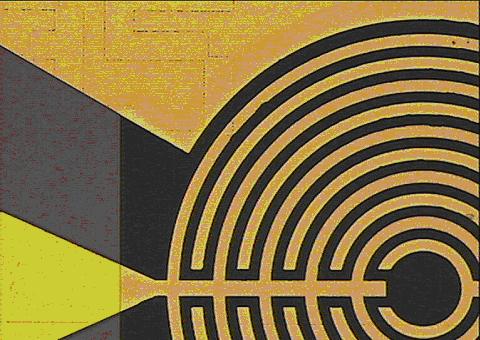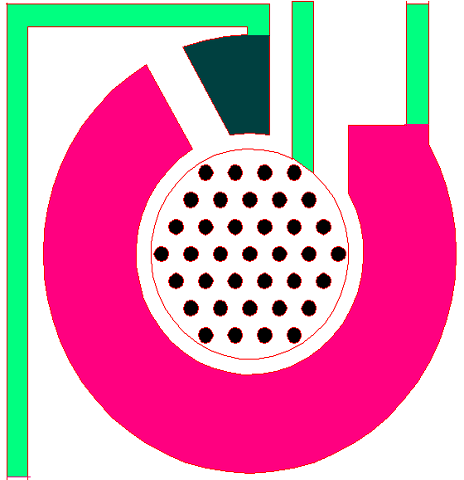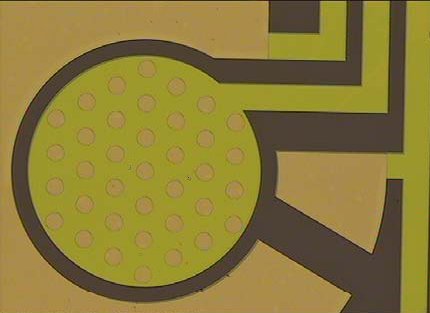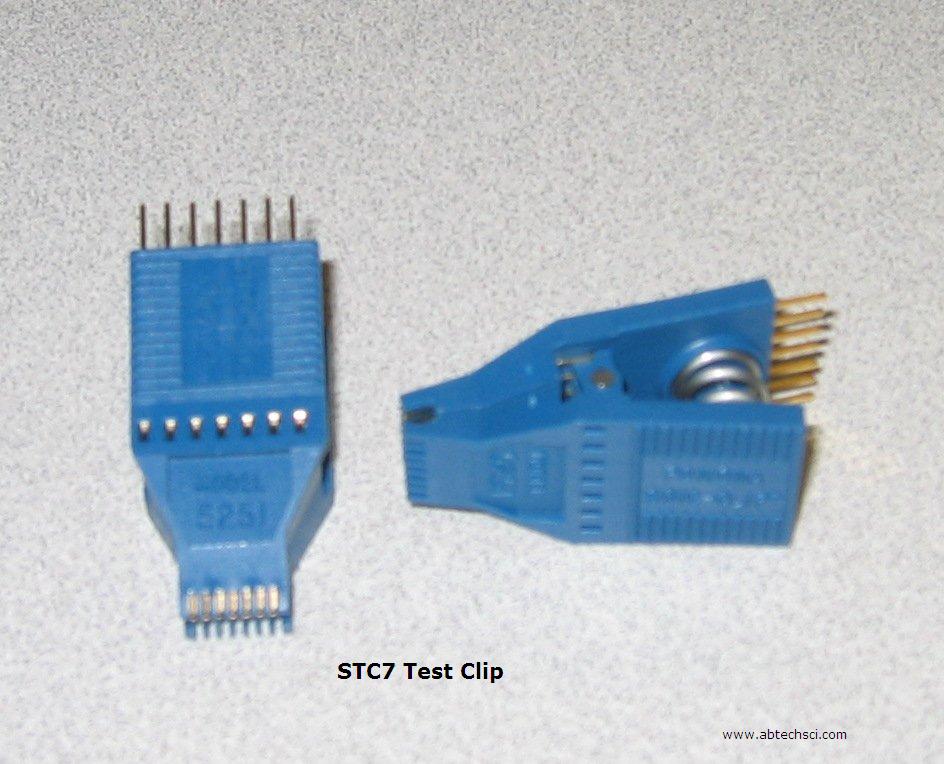|
ELECTROCHEMICAL
CELL-ON-A-CHIP ARRAYST(ECC) |
|
ECC DEVICES |
Critical Dimensions |
Designs |
Conductor |
|
ECC IME 2005 ARRAYS |
20 microns line and space |
5 interdigitated bands |
Au, Pt, ITO |
|
ECC IME 1505 ARRAYS |
15 microns line and space |
5 interdigitated bands |
Au, Pt, ITO |
|
ECC IME 1004 ARRAYS |
10 microns line and space |
5 interdigitated bands |
Au, Pt, ITO |
|
ECC IME 0505 ARRAYS |
5 microns line and space |
5 interdigitated bands |
Au, Pt, ITO |
|
ECC MDEA 5037 ARRAYS |
50 microns diameter |
37 micro discs |
Au, Pt, ITO |
|
|
|
||||
|
|||||||||
|
Ø Chip Substrate: |
Schott D263 Borosilicate Glass |
Value |
|||||||
|
Dielectric Constant, Epsilon(r) at 1 MHz |
6.7 |
||||||||
|
Dielectric Loss Angle, tan delta, at 1 MHz |
61 x 10-4 |
||||||||
|
Electrical Resistivity (50 Hz) (250 C) |
1.6 x 108 ohm cm |
||||||||
|
Coefficient of Linear Thermal Expansion, * 20-300 Deg C |
7.2 x 10^-6 K^-1 |
||||||||
|
Refractive Index at 20 C, ne ( Lambda = 546.1 nm) |
1.5249 |
||||||||
|
Ø Metallization: |
100 Å Ti|W / 1000 Å Au or Pt and ITO = 10 Ohms/sq |
||||||||
|
Ø Insulation: |
0.5m of Silicon Nitride (Si3N4) |
||||||||
|
Ø ECC IME XX05 |
2004.3 |
1504.3 |
1004.3 |
504.3 |
|||||
|
Digit length, d, (microns) |
2980 |
2985 |
2990 |
2995 |
|||||
|
No. of digit pairs per sensor, N |
5 |
5 |
5 |
5 |
|||||
|
Digit Width, a, (microns) |
20 |
15 |
10 |
5 |
|||||
|
Interdigit Space, a, (microns) |
20 |
15 |
10 |
5 |
|||||
|
Spatial Periodicity, lambda, (microns) |
80 |
60 |
50 |
20 |
|||||
|
Zaretsky Meander Length, M, (cm) |
|
||||||||
|
Center Line or Serpentine Length (cm) |
|
||||||||
|
Ø ECC MDEA 5037 |
2004.3 |
1504.3 |
1004.3 |
0504.3 |
|||||
|
Digit length, d, (microns) |
2,980 |
2,985 |
2,990 |
2,995 |
|||||
|
Digit Width, a, (microns) |
20 |
15 |
10 |
05 |
|||||
|
Interdigit Space, a, (microns) |
20 |
15 |
10 |
05 |
|||||
|
Spatial Periodicity, lambda, (microns) |
80 |
60 |
50 |
20 |
|||||
|
Ø IME Chip Dimensions |
Un-packaged Die |
|
|||||||
|
(l x w x t) |
|
||||||||
|
ECC IME XX05 |
1.00 x 2.00 x 0.05 cm |
|
|||||||
|
ECC MDEA 5037 |
0.40 x 2.00 x 0.05 cm |
|
|||||||
|
Ø Mounting |
|||||||||
|
|
No mounting available. Connection is via the STC 7 Test Clip |
||||||||
|
|
|
||||||||
Back to top |
|||||||||



